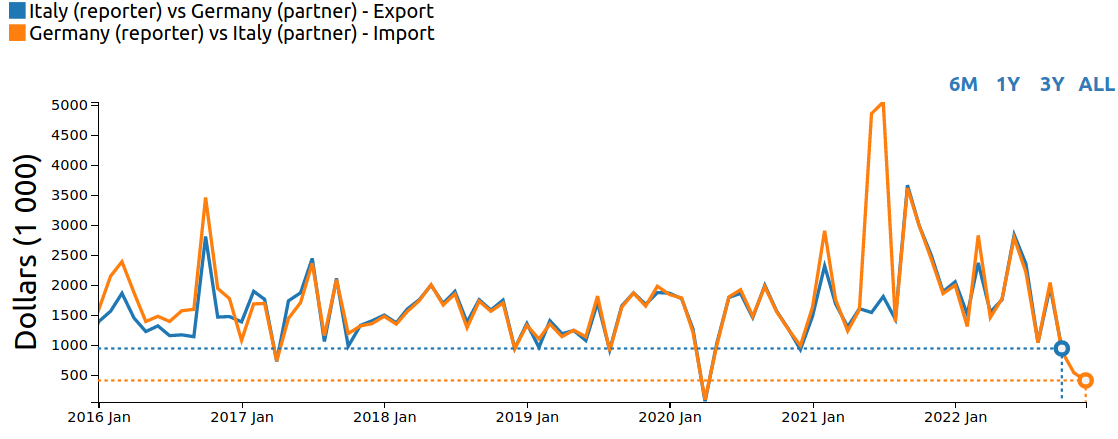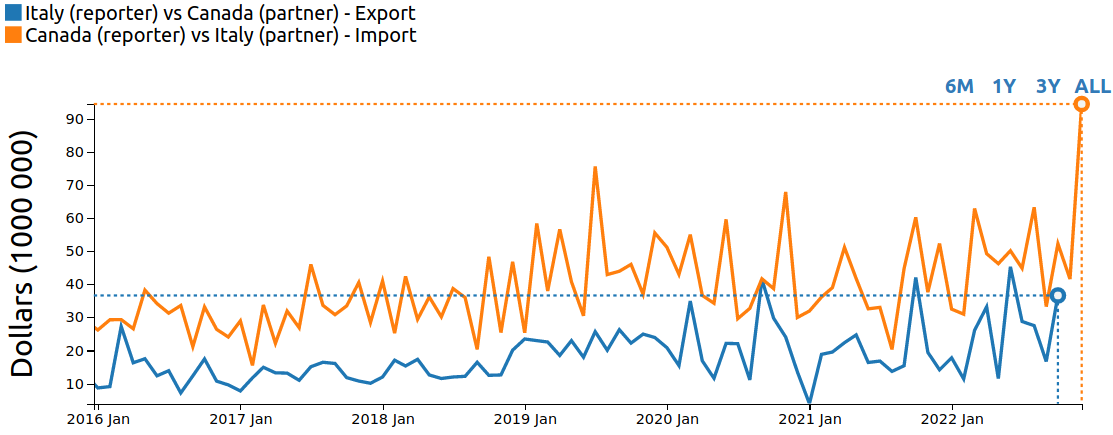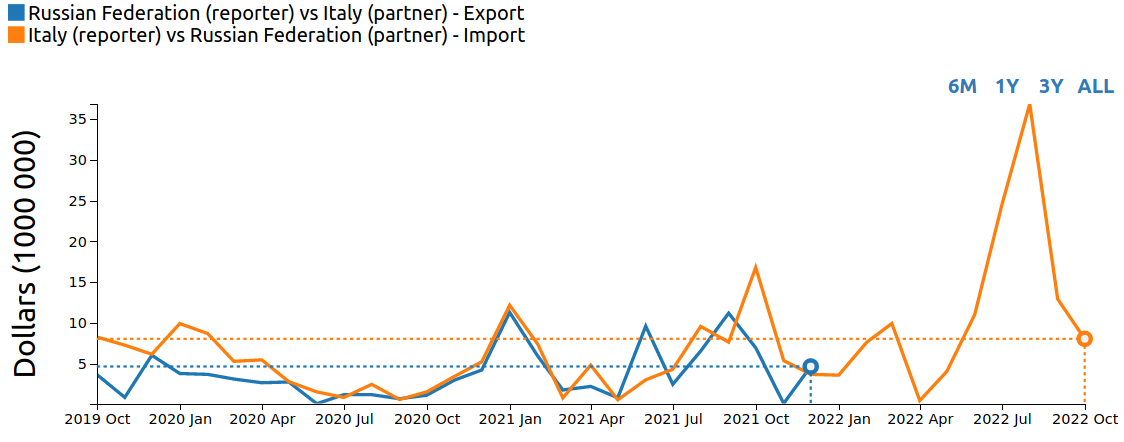Reconstruction of Russian Trade Data
The mirror flow technique allows us to robustly derive Kremlin missing trade data, no longer declared since the outbreak of war
Published by Simone Zambelli. .
Uncertainty Foreign markets Internationalisation toolsAs a consequence of the war in Ukraine, the international community launched a series of sanctions aimed at isolating Russia both politically and economically. Europe is at the forefront on this front, immediately condemning Soviet behaviour and promulgating more than ten sanctions packages. On the other hand, the Kremlin is trying to strengthen its trade relations with other partners, turning its attention eastwards, in particular towards China and India.
On the side of international trade statistics, a mirror of the deepening rift created between Russia and the 'Western bloc' is the lack of Russia's foreign trade information to the main international trade circuits and offices, the most important of which is the UN, which makes available statistics collected through the UN Comtrade DataBase. Russian declarations are also unavailable from the International Trade Center (ITC) and even its own national statistics office. Given the increasing difficulty in obtaining such data from public and certified sources, how can we obtain useful information on Russian market trends?
The ExportPlanning information system ensures the robustness of the information even in cases where the reporting country omits the data. Foreign trade data in fact have a special feature that distinguishes them, namely the double declaration, which is carried out independently of each other. This means that the same flow is declared twice: the first time to the customs of the exporting country (as a flow in export), the second time to the customs of the importing country (as a flow in import).
For example, the graph below shows the monthly declarations of export flows from Italy to Germany of dishwashers, and the mirror-image declarations of German imports from Italy for this product.
Fig. 1 – Dishwashers: double declaration Italy-Germany

Source: ExportPlanning.
In this case, the double declaration is almost coincidental and denotes perfect transparency between the two countries, making this a reliable measure of the value of dishwasher exports from Italy to Germany.
However, it could be the case that the trade flow is recorded differently by customs in the two countries, creating a difference in both levels and dynamics, as shown in the graph below showing Italian pharmaceutical exports to Canada.
Fig. 2 – Pharmaceuticals: Italy-Canada double declaration

Source: ExportPlanning.
In this case, the differences between the declarations are very marked, partly due to the distance between the two countries; in fact, it can be seen that the import declaration is often delayed by a month compared to the export declaration, due to the physiological time needed for the goods to reach their destination.
The mirror flow technique thus makes it possible to measure trade flows between countries with statistical robustness. This double measurement is in fact a fundamental feature of trade and allows, in fact, not only to have information on a given economic phenomenon, but also to make an assessment of the quality of the measurements made.
Returning to the subject of Russia, the double measurement of customs information thus allows us to obtain missing data by looking at the declarations of all Moscow's trade partners included in the extensive ExportPlanning information system, which integrates the Comtrade database with the Comext database of Eurostat and Usatrade of the US Bureau of Statistics.
To demonstrate the validity of this method, the graph below shows the historical series of the flow of Russian fertilisers exports to Italy and the specular Italian import declarations.
Fig. 3 – Fertilisers: Italy-Russia double declaration

Source: ExportPlanning.
The robustness of this data is evident, as the curves are very similar both in dynamics and in level up to the last available Russian data. Through the declaration of the flow recorded by the Italian customs we can therefore estimate the amount of Russian exports of Fertilisers to Italy in the course of 2022 as well, despite the fact that Russia has suddenly stopped its declarations (the blue line in fact stops in December 2021).
Since the ExportPlanning Information System has trade data for a very large sample of countries, it is possible to derive data on Russia from the individual declarations of all trading partners, for all products included in the Harmonised System, using the method just described.
Conclusions
The mirror flow technique allows us to have reliable information even in the absence of data. The most emblematic case is the Russian market, on which data declared by the Kremlin is no longer available. World merchandise trade data prove to be an extremely rich mine of useful information for analysing the market potential of different countries and the competitive strength of different exporters.


